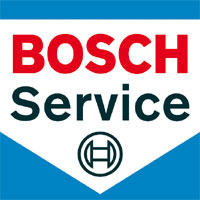Tyre Labelling
New EU Legislation passed in 2012 with a focus on tyre labelling states that every new tyre sold within Europe must be labelled. There are a few exceptions but we’ll discuss that later. Many tyre industry pundits have called this legislation the biggest change to hit the industry in over 50 years.
At Elite Garages, we like to educate our customers about their tyres and help them make the right choices when buying tyres. We want to help you understand exactly what the tyre labelling means and how it will affect you.
What does a tyre label mean?
Tyres are all made using similar processes but no two makes of tyres are the same. The aim of the EU tyre labelling legislation is to increase driver safety, promote fuel-efficiency and tyre safety, decrease noise levels and educate consumers to make informed purchasing decisions. You need to find the right tyres that match your driving requirements. Some provide better traction in wet weather or snow, while others offer a smoother ride at high speeds.
All tyre and vehicle suppliers or distributors are obligated under this legislation to provide customers with all the necessary information. In accordance with the EU tyre label, tyres assessed on performance in three categories with a score rating as indicated below:
- Fuel efficiency is displayed on a sliding scale from A (best) to G (worst). The difference in fuel consumption between a car fitted with A and G class tyres is approximately 0.5 litres per 60 miles or 100 km. That equates to a saving of around 80 litres and more than £110 per year (according to regulation EC 1222/2009).
- Where applicable, wet grip performance is measured under controlled conditions and rated from A (best) to G (worst). This includes passenger car tyres (C1 tyres), light commercial vehicles (vans – C2 tyres) and heavy vehicles (trucks, buses – C3 tyres).
- Exterior noise level, measured in decibels (dB) and a pictogram with up to three ‘sound waves’. A single ‘sound wave’ shows that the tyre is relatively quiet while three ‘sound waves’ show a relatively noisy tyre.
Based on a set of four tyres fitted on an average vehicle, tyres with the best EU tyre label rating for wet grip generally have a 30% shorter braking distance compared to the worst rated tyres. And with the rolling resistance of your tyres accounting for about 15% of your overall fuel consumption, it just makes sense to choose the right tyres for your car.
Tyre Labelling Exceptions
As mentioned earlier, there are a few exceptions to the new EU tyre label legislation which does not cover the following:
-
- re-tread tyres
- professional off-road tyres
- temporary spare tyres
- studded tyres
- racing-only tyres
- tyres with a speed rating of less than 50 mph (80 km/h)
- tyres only for vehicles registered for the first time before 1 October 1990
- tyres with a nominal diameter smaller than 254 mm or bigger than 635 mm
For additional information about tyre labelling, visit the European Commission website or contact any of our Elite Garages. Our staff are friendly, professional and trained to offer expert assistance in any way they can.


